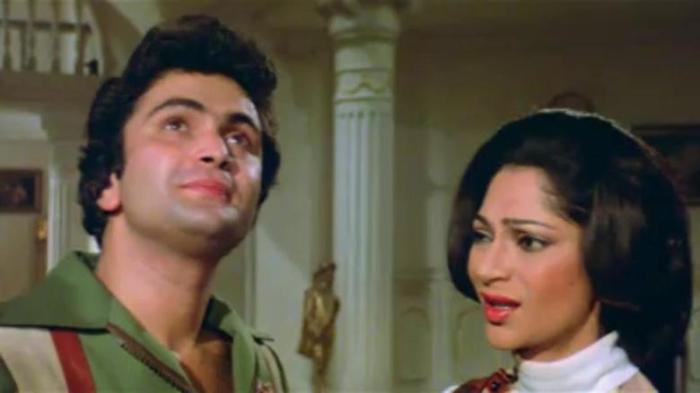The success of the recently released Hrithik Roshan and Yami Gautam movie “Kaabil” , a revenge drama has proved that “formula” films can still work in the Hindi film industry aka Bollywood. In addition, what this success also shows us, is that the repeated use of a “formula” has always been an obsession with Bollywood. Now there have been a number of “formulas” used repeatedly by renowned producers/directors in the film industry with the obvious intention to stay in their comfort zone, and thereby maintain their success rate. So here is presenting a list of 5 “formulas” that have not only been “overused” by Bollywood but also have proven to be extremely successful over a period of time.
FORMULA 1: LOST AND FOUND

Movie Examples: Amar, Akbar and Anthony, Ram Aur Shyam, Seeta Aur Geeta, Yaadon Ki Baaraat and Chaalbaaz.
The “Lost and found” formula is one of the most oldest concepts in storytelling that “Bollywood” has always loved to use over and over again. It basically is all about separation of a set of siblings (mostly twins) during “childhood” due to a cruel “twist of fate”, which eventually culminates in a happy reunion during “adulthood”. Apart from this concept being reused several times by the industry (especially during the 1970’s) it has also mostly proven to be successful clearly indicating that the audiences in India love “melodrama” rather real “drama”.
FORMULA 2: GIRL-BOY LOVE STORY AND SEVERE OPPOSITION FROM THE PARENTS (i.e. THE INDIAN VERSION OF ROMEO-JULIET)

Movie Examples: Qayamat Se Qayamat Tak, Maine Pyaar Kiya, Ram-Leela, Dilwale Dulhaniya Le Jayenge and Bobby.
Inspired from “Romeo and Juliet” by William Shakespeare, Bollywood created a typical melodramatic concept/formula revolving around young lovers and the obstacles they face in the form of their families. Such has been the success ratio of this concept that filmmakers beginning from the 1970’s right up to the 2000’s have made good use of it, and that too successfully. The success though is not surprising because after all, this concept essentially was first created by a genius called “Shakespeare”.
FORMULA 3: THE LOVE TRIANGLE

Movie Examples: Rangeela, Sagar, Dev D, Kuch Kuch Hota Hai, and Dil Toh Pagal Hain.
Another successful formula that Bollywood has made use of to great effect is the “Love triangle”. This concept essentially dwells into the “timeless” emotion of love and the complications that could arise when either two males or females are in love with the same male/female at the same time. Like most of the other tried and tested storytelling formulas this too carries a lot of “melodrama” due to the emotional complexities involved (which is what Indian audiences love) as a result of which it has been successful for years now. With a new age Bollywood movie like “Dev D” having also used this formula successfully it certainly looks the concept of a “Love triangle” in the Hindi film industry is here to stay for many more years to come.
Formula 4: THE REVENGE DRAMA

Movie Examples: Trishul, Sholay, Badlapur, Agneepath, Ghajini and Kaabil.
“Revenge is the purest emotion” is a quote from the Hindu mythological epic Mahabharata, and hence it comes as no surprise that this extremely strong emotion has been overused as a formula for success by the Hindi film industry. This concept usually entails a protagonist usually seeking revenge as result of a rape or a death ( at times both) of a member of his/her family from the antagonist. The fact that this theme of revenge inherently possesses elements of melodrama, is the major reason why it has been repeatedly used as a “tool” by filmmakers over the years to acquire instant success. Although, there a few exceptional movies such as Badlapur that avoid using this theme in an extremely cliched manner, the majority seem to follow the tried and tested formula of what can be referred to as a typical “filmy revenge”. The recent success of Kaabil at the box office only reaffirming the fact that in a star driven Hindi film industry this” revenge formula” has always worked, and will continue to do so in the future as well.
FORMULA 5: REINCARNATION

Movie Examples: Karan Arjun, Karz, and Om Shaanti Om.
Reincarnation is another unique concept belonging to Hinduism (a major tenet) similar to revenge that has also been successfully “overused” as a safe formula over the years by filmmakers in the Hindi film industry. The filmmakers in Bollywood have over the years used this concept in storytelling mainly in two ways. They can be termed as follows
a. Carbon copy reincarnation story: In this type of reincarnation (mostly) the lead character/characters are shown to be reborn possessing the very same form (i.e. same face and body) as seen in the previous birth with the sole intention of extracting revenge from the antagonist. Best example, would be the Shah Rukh Khan and Salman Khan “blockbuster” Karan Arjun.
b. Normal reincarnation story: This type of reincarnation is essentially based on the original Hindu concept of rebirth, in which the lead character essentially takes a form (i.e. body and face) completely different to the one seen in the previous birth with only the soul remaining intact. Best example would be the Rishi Kapoor “musical” Karz.
In other words, this concept (if analyzed closely) in reality is a”rehashed” version of the revenge drama/melodrama which has been done to death by filmmakers in the Hindi movie industry. However, with success (i.e. in terms of box office numbers) considered to be such a crucial factor in movie making in Bollywood, it certainly would not be a surprise, if this concept of “reincarnation” continues to be used in the future as well.
Above all, what these five overused formulas clearly indicate, is that “In the Hindi film industry, whenever a formula is created, success is always found”.
Video: Watch the top 10 Bollywood based on the concept of “Love Triangle”